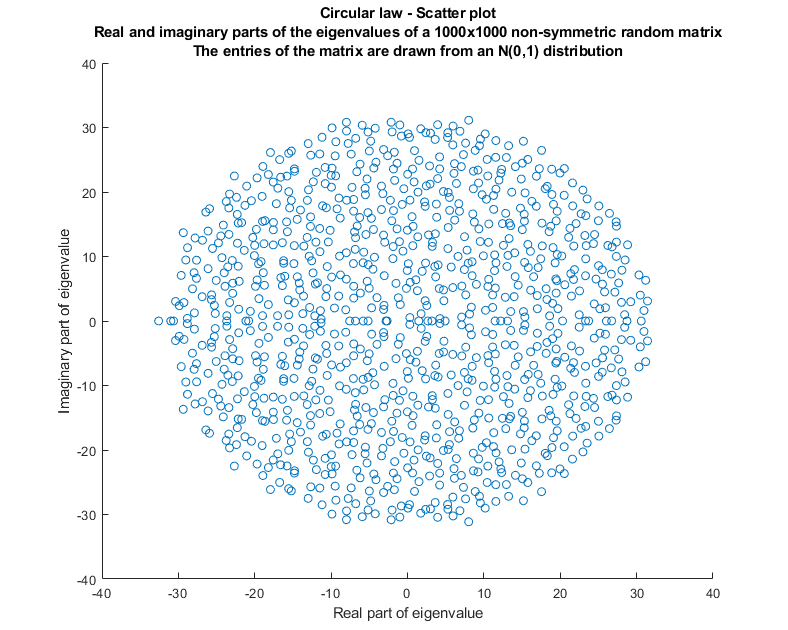A random matrix is a matrix whose entries are random variables.
We can analyze a random matrix by studying the characteristics of its associated random vector, which is obtained by stacking the columns of the matrix.
For example, given a
![]() random
matrix
random
matrix![[eq1]](/images/random-matrix__2.png) we
can study its associated
vectorization
we
can study its associated
vectorization![[eq2]](/images/random-matrix__3.png) which
is a random vector.
which
is a random vector.
Another example is a
![]() random
matrix
random
matrix![[eq3]](/images/random-matrix__5.png) whose
vectorization
is
whose
vectorization
is![[eq4]](/images/random-matrix__6.png)
Thus, all the theory developed for random vectors applies to random matrices.
For example, a random matrix is said to be:
discrete if the associated random vector is discrete;
continuous if the associated random vector is continuous.
A flourishing area of modern mathematics, called random matrix theory, studies the distributional properties of some characteristics of random matrices such as their eigenvalues and determinants.
Important results in random matrix theory are:
the Wigner semicircle law (distribution of the eigenvalues of a symmetric matrix);
the Wigner surmise (distribution of the spaces between the eigenvalues);
the Circular law (distribution of the eigenvalues of a non-symmetric matrix);
the Tracy-Widom law (distribution of the largest eigenvalue of a matrix);
the Marchenko-Pastur law (distribution of the singular values of a matrix).
This blog post provides an elementary description of some of these results.


Probably, the most important random matrix distribution is the Wishart distribution. It is often used in probability and statistics and it has many interesting connections with other distributions such as the Gamma and the multivariate normal.
Several other matrix distributions are used in mathematical and statistical applications.
Here is a list.
Generalizations of vector distributions:
Gaussian distributions:
Circular distributions:
Recent studies analyze also the properties of some discrete matrix distributions.
Curious to know more about random matrix theory? Here are some suggestions:
a primer by Julian Izenman;
an introductory book by Giacomo Livan et al.;
a more advanced book by Terence Tao.
Previous entry: Probability space
Next entry: Realization of a random variable
Please cite as:
Taboga, Marco (2021). "Random matrix", Lectures on probability theory and mathematical statistics. Kindle Direct Publishing. Online appendix. https://www.statlect.com/glossary/random-matrix.
Most of the learning materials found on this website are now available in a traditional textbook format.